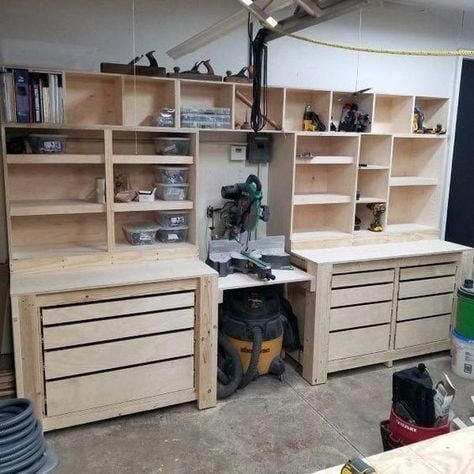Maple wood has long been hailed as a top choice in the woodworking industry. Its reputation for strength, durability, and versatility has made it a favorite among professional woodworkers and hobbyists alike.
But is maple truly a good choice for all types of woodworking projects? In this blog post, we will delve into the properties of maple wood, explore its various types, discuss its advantages and challenges, compare it to other popular woods, and ultimately determine whether maple is indeed a good option for woodworking.
When it comes to woodworking, the properties of the chosen wood can greatly impact the outcome of a project. Maple wood boasts several desirable characteristics that make it an excellent choice for crafting furniture, cabinets, flooring, and other woodworking pieces. It is known for its hardness, which allows it to withstand wear and tear over time.
Its durability ensures that projects made with maple will last for generations. Additionally, maple’s stability makes it less prone to warping or shrinking with changes in humidity or temperature.
There are different types of maple wood used in woodworking, each with its unique qualities. Hard maple, also known as sugar maple due to its sap being used in making syrup, offers a lighter color tone and finer grain patterns.
On the other hand, soft maple-often referred to as red maple-features slightly darker hues and coarser grain patterns. The variations in color and grain patterns among these different types of maples give woodworkers flexibility in achieving diverse aesthetic effects in their projects.
Intricate details can be expertly carved or turned from maple wood due to its ability to hold fine lines and shapes exceptionally well. Furthermore, the natural beauty of maple’s grain pattern lends an aesthetically pleasing look to any finished piece.
Throughout this blog post, we will explore the numerous advantages of working with maple wood while also addressing any challenges that woodworkers may encounter when using this type of lumber. By examining these aspects thoroughly, we can better understand whether maple is indeed a good choice for various woodworking projects.
Properties of Maple
Maple wood is renowned for its exceptional properties that make it a popular choice among woodworkers. One of the key characteristics of maple is its hardness.
Maple is classified as a hardwood and ranks high on the Janka hardness scale, which measures a wood’s resistance to wear and indentations. The hardness of maple allows it to withstand heavy use and resist dents and scratches, making it an ideal choice for furniture pieces that are subject to frequent handling or foot traffic, such as dining tables or high-use chairs.
In addition to its hardness, maple also exhibits impressive durability. It has a close grain structure with a fine texture, which contributes to its strength and resistance to moisture absorption. This makes maple less susceptible to warping or shrinking when exposed to changes in humidity or temperature. As a result, furniture or structures made from maple are more likely to maintain their shape and integrity over time compared to woods with looser grain structures.
Moreover, stability is another outstanding characteristic of maple wood. Its low shrinkage rate ensures minimal movement or distortion during the drying process, contributing to the wood’s stability once it is used in woodworking projects. This property makes maple an excellent choice for flooring applications where dimensional stability is crucial. Maple flooring can withstand fluctuations in environmental conditions without cupping or buckling.
| Property | Explanation |
|---|---|
| Hardness | Maple is classified as a hardwood and has a high ranking on the Janka hardness scale. |
| Durability | Maple has a close grain structure and is resistant to moisture absorption, making it less susceptible to warping or shrinking. |
| Stability | Maple wood has a low shrinkage rate, ensuring minimal movement or distortion during drying and in woodworking projects. |
These exceptional properties of hardness, durability, and stability make maple wood an ideal choice for various types of woodworking projects. Its strength and resistance to wear and tear allow it to withstand the rigors of everyday use, making it suitable for furniture pieces that require longevity.
Furthermore, its stability ensures that maple wood products will maintain their shape even in different environmental conditions. Woodworkers can confidently choose maple for their projects knowing that they are working with a reliable and versatile material.
Types of Maple
Types of Maple: Provide an overview of the different types of maple wood used in woodworking, such as hard maple (sugar maple) and soft maple (red maple). Discuss the variations in color, grain patterns, and density, and how they can impact the final outcome of woodworking projects.
When it comes to woodworking, there are different types of maple wood that are commonly used for various projects. Two main types are hard maple, also known as sugar maple, and soft maple, which is often referred to as red maple. Understanding the characteristics and differences between these types of maples can greatly influence the success and aesthetics of your woodworking projects.
Hard Maple (Sugar Maple)
Hard maple is highly regarded in the woodworking industry for its exceptional strength and durability. It is known for its pale white to light brown color, which offers a clean and uniform appearance when finished.
The grain pattern of hard maple is typically straight, making it ideal for creating clean lines in furniture pieces or cabinetry. This type of maple also has a high density compared to softwoods like pine or spruce, adding to its strength and ability to withstand wear and tear over time.
Soft Maple (Red Maple)
Contrary to its name, soft maple is still a fairly dense hardwood that is widely used in woodworking projects. It has a range of colors that can vary from creamy white to reddish-brown tones. The grain pattern of soft maple may have more swirls or waves compared to hard maple, which can add character and visual interest to the finished piece. Soft maple is favored for its affordability compared to hard maple while still providing decent durability and versatility.
Impact on Woodworking Projects
The choice between hard or soft maple depends on the specific requirements of your woodworking project. Hard maple’s harder density makes it better suited for projects where durability plays a crucial role – such as flooring or kitchen countertops that experience heavy use.
Its lighter color also makes it an ideal choice for light-colored finishes that highlight the natural beauty of the wood. On the other hand, soft maple’s affordability and more pronounced grain patterns may make it a preferred option for projects where budget or aesthetics are prioritized over extreme durability.
Understanding the characteristics of different types of maple wood will allow you to make informed decisions when selecting materials for your woodworking projects. Whether you choose hard or soft maple, both options offer their own unique qualities and can enhance the final outcome of your piece. Remember to consider factors such as color, grain pattern, and density to ensure that your woodworking project achieves the desired look and meets its functional requirements.
Advantages of Maple
Maple wood offers numerous advantages that make it a popular choice for woodworking projects. Its unique properties contribute to its suitability for various applications, from creating furniture and cabinets to flooring and other intricate woodworking designs.
One of the main advantages of maple is its exceptional resistance to wear and tear. Its hardness and density give it the ability to withstand heavy use, making it ideal for furniture pieces that are subjected to frequent handling or weight-bearing. Additionally, maple’s durability ensures that finished products made from this wood can last for generations with proper care.
Another advantage of working with maple is its ability to hold intricate details when carved or turned. Maple’s fine, tight grain allows for precise detailing without compromising its overall strength. This makes it a preferred choice for creating intricate patterns, decorative accents, or even woodturning projects. The clean and consistent nature of maple’s grain also enhances the overall aesthetic appeal of finished woodworking pieces.
The aesthetic appeal of maple wood cannot be overlooked either. With its light creamy color and occasional reddish-brown streaks or highlights, maple adds warmth and elegance to any woodworking project. It can be easily stained or finished to accentuate the natural beauty of its grain patterns or complement other design elements in a space.
In addition to furniture making, maple is widely used in cabinetry due to its excellent compatibility with various finishes such as stains, oils, lacquers, or varnishes. These finishes not only enhance the appearance of the wood but also protect it from moisture and other environmental factors that could potentially damage it over time.
Challenges of Working with Maple
Challenges of Working with Maple: Addressing Density and Overcoming Difficulties in Cutting and Shaping
When it comes to woodworking, working with maple wood can present its own set of challenges. One of the primary difficulties that woodworkers may face when working with maple is its density. Maple is known for its dense grain structure, which can make it difficult to cut and shape compared to other woods. However, with the right tools, techniques, and precautions, these challenges can be overcome successfully.
Density of Maple
Maple wood has a dense and tight grain structure that gives it exceptional durability and strength. While this density is advantageous in terms of stability and resistance to wear and tear, it poses challenges during the crafting process. The density of maple can affect how easily it can be cut, shaped, or carved. It requires more effort to work with maple compared to softer woods.
Overcoming Challenges
To overcome the challenges associated with working with dense maple wood, woodworkers should consider using appropriate tools and techniques:
- Choosing the Right Tools: Because of its density, woodworking tools such as saw blades or router bits specifically designed for hardwoods are recommended for cutting through maple. High-quality and sharp cutting tools will reduce chip-outs and ensure cleaner cuts.
- Proper Technique: Taking slow cuts and allowing the tool to do the work instead of forcing it can help prevent tear-out that may occur due to the dense structure of maple wood. Woodworkers should also pay attention to grain direction when planning cuts to minimize tear-out.
- Precautions: Due to its hardness, there is an increased risk of splintering or cracking during shaping processes like turning or carving. Sanding should be done progressively and carefully in order to avoid uneven surfaces or accidentally rounding off edges.
By using the correct tools suited for hardwoods like maple, implementing proper techniques such as slow cuts, and taking necessary precautions to prevent splintering or cracking, woodworkers can overcome the challenges of working with maple wood and create beautiful and precise woodworking projects.
Overall, while working with maple may require a bit more effort than some other woods due to its density, by employing the right tools and techniques, woodworkers can harness the exceptional properties of maple to bring their woodworking projects to life. With patience, practice, and attention to detail, the challenges associated with working with maple can be successfully overcome, resulting in exquisite and durable woodworking creations.
Finishing Maple Wood
Maple wood is a popular choice in woodworking due to its stunning grain pattern and beautiful natural color. However, it is important to properly finish the wood in order to enhance its appearance and protect it from damage caused by moisture and other environmental factors. There are several finishing options available for maple wood that can help achieve the desired look while also providing long-lasting protection.
One of the most common finishing techniques for maple wood is staining. Stains are available in a wide range of colors, allowing woodworkers to customize the look of their maple projects. It is important to note that maple has a tendency to absorb stain unevenly due to its dense nature.
To prevent blotching, it is recommended to use a pre-stain conditioner before applying any stain. This will ensure an even absorption of the stain and help achieve a smooth and consistent color on the surface of the maple.
In addition to staining, using oil finishes on maple can also bring out the natural beauty of its grain pattern. Oils such as tung oil or linseed oil penetrate deep into the wood fibers, enhancing its natural color while providing protection against moisture. These finishes can give maple a warm and rich appearance, highlighting its unique characteristics.
Lacquers and varnishes are another option for finishing maple wood. These protective coatings not only enhance the visual appeal of maple but also provide durable protection against scratches and dents. Both lacquers and varnishes come in various sheens ranging from matte to high gloss, allowing woodworkers to choose the desired level of shine for their projects.
When applying any type of finish to maple wood, it is important to follow the manufacturer’s instructions and apply multiple coats for optimal results. Sanding between coats can also help achieve a smooth and flawless finish. Additionally, it is crucial to allow the finish to fully cure before using or placing any objects on the finished surface.
Maple in Different Woodworking Projects
Maple wood is highly regarded in the woodworking industry for its versatile applications in a wide range of projects. Its unique properties make it an excellent choice for different woodworking endeavors, from crafting intricate designs to creating solid and durable furniture pieces. Moreover, maple wood has become a preferred choice among professional woodworkers due to its exceptional characteristics.
One area where maple excels is in the crafting of intricate designs. Its hardness and density allow for precise carvings and turnings, resulting in fine details that enhance the aesthetic appeal of any woodworking project. From ornate chair legs to decorative moldings, maple lends itself well to intricate craftsmanship. Additionally, its stability ensures that these delicate details remain intact over time.
In addition to its suitability for delicate work, maple is also prized for its ability to create solid and durable furniture pieces. The outstanding strength and durability of hard maple (sugar maple) make it an ideal choice for constructing furniture that can withstand everyday use. Maple furniture not only looks beautiful but also has the resilience to last for generations.
Professional woodworkers often favor maple wood due to its consistent grain pattern and ease of working with. The uniform texture of this wood makes it easy to sand and finish, resulting in a flawless surface that showcases the natural beauty of the grain. Whether used in cabinets, tables, or other woodworking projects, maple provides a professional-looking finish that elevates the overall quality of the piece.
Overall, maple offers countless possibilities in woodworking projects. Its versatility allows it to be utilized in various applications, catering to both practicality and aesthetics. From crafting intricate designs to constructing durable furniture pieces, maple wood continues to be a top choice for both hobbyists and professionals alike.
Unordered list:
- Maple’s hardness and density make it perfect for intricate carvings and turnings.
- The strength and durability of hard maple (sugar maple) are ideal for creating long-lasting furniture pieces.
- Professional woodworkers appreciate the consistent grain pattern and ease of working with maple wood.
So, whether you are a beginner or an experienced woodworker, consider incorporating maple into your next project. Its versatility and unique properties make it an excellent choice for bringing your woodworking visions to life.
Maple vs. Other Woods
Maple wood is a popular choice in the woodworking industry, but how does it compare to other commonly used woods? When considering maple versus woods like oak, cherry, or walnut, there are unique advantages and disadvantages to consider. Understanding these differences can help woodworkers make informed decisions about which wood to use for their specific projects.
One advantage of maple wood is its durability. Maple is known for being hard and dense, making it resistant to wear and tear. This makes it an excellent choice for furniture pieces that need to withstand everyday use, such as tables or chairs. Oak wood also offers durability, as it is known for its strength and longevity. However, one disadvantage of oak is that it can be more susceptible to scratches and dents compared to maple.
Another advantage of maple wood is its ability to hold intricate details when carved or turned. The tight grain of maple allows for precise detailing in woodworking projects. Walnut wood also offers this advantage, as it has a rich, dark color and a smooth grain pattern that lends itself well to intricate designs. Cherry wood, on the other hand, may not hold details as well due to its softer nature.
Additionally, the aesthetic appeal of maple cannot be overlooked. Maple has a light color with subtle variations in grain patterns that can add visual interest to woodworking projects. It also accepts stains and finishes well, allowing woodworkers to enhance the natural beauty of the wood. In comparison, cherry wood has a warm red hue that deepens over time with exposure to sunlight, while walnut showcases a dark brown color with striking grain patterns.
While each wood has its own advantages and disadvantages, ultimately the choice between maple and other woods comes down to personal preference and project requirements. Woodworkers should consider factors such as durability, detail-holding capabilities, aesthetics, and ease of working with the wood before making a decision. Ultimately, understanding the unique characteristics of each wood can help guide woodworking enthusiasts towards choosing the best material for their specific projects.
Conclusion
In conclusion, maple wood proves to be an excellent choice for woodworking projects due to its unique properties and advantages. Its hardness, durability, and stability make it suitable for a wide range of woodworking applications, from crafting intricate designs to creating solid furniture pieces. With variations in color, grain patterns, and density among different types of maple wood, woodworkers have the flexibility to choose the ideal option for their specific project needs.
Despite its challenges, such as its density making it difficult to cut and shape, woodworkers can overcome these obstacles through the use of proper tools, techniques, and precautions. Additionally, various finishing options are available to enhance the appearance of maple wood and protect it from external factors.
When compared to other woods commonly used in woodworking like oak, cherry, or walnut; maple offers its own unique advantages and disadvantages. It is important for woodworkers to consider these factors when selecting the right wood for their projects.
Ultimately, maple wood provides endless possibilities in woodworking endeavors. From furniture-making to cabinetry and flooring installations; its resistance to wear and tear, ability to hold intricate details when carved or turned, and aesthetic appeal make it a preferred choice among professional woodworkers. So whether you’re a seasoned professional or a DIY enthusiast starting out on your woodworking journey, don’t hesitate to explore the countless possibilities that working with maple has to offer.
Frequently Asked Questions
What are the disadvantages of maple wood?
One major disadvantage of maple wood is its tendency to be more expensive compared to other types of wood. This can make it less accessible for individuals or projects with tight budgets. Additionally, maple is known for its hardness and density, making it relatively difficult to work with hand tools or certain woodworking techniques.
Some craftsmen may find it challenging to shape or carve maple, requiring specialized equipment or skills. Another drawback of maple wood is its susceptibility to moisture damage and warping if not properly treated or maintained. Therefore, it requires regular sealing and protection to ensure longevity.
Is maple a high quality wood?
Maple is widely considered a high-quality wood due to its desirable characteristics and various applications in the woodworking industry. It is highly regarded for its durability, strength, and resistance to wear and tear. Maple exhibits a smooth grain pattern which allows for beautiful finishes when stained or polished, enhancing its natural beauty.
It also possesses excellent stability, which prevents warping and movement even under changing environmental conditions. Moreover, maple’s consistency in color and grain makes it perfect for matching pieces of furniture or cabinets in a seamless manner. Overall, these qualities contribute to the perception of maple as a high-quality wood.
Is maple a hardwood or soft wood?
Maple is classified as a hardwood rather than a softwood based on its botanical characteristics. Hardwoods typically originate from deciduous trees that shed their leaves annually, while softwoods come from coniferous trees which retain their foliage throughout the year. Despite its classification as a hardwood, maple has intermediate hardness compared to some other popular hardwoods like oak or walnut.
However, this should not undermine the fact that maple possesses several features associated with hardwoods such as density, strength, durability, and resistance to wear and tear. Its inclusion in the hardwood category reflects more on its structure than on its actual hardness level.

Hi everyone! I’m a woodworker and blogger, and this is my woodworking blog. In my blog, I share tips and tricks for woodworkers of all skill levels, as well as project ideas that you can try yourself.





